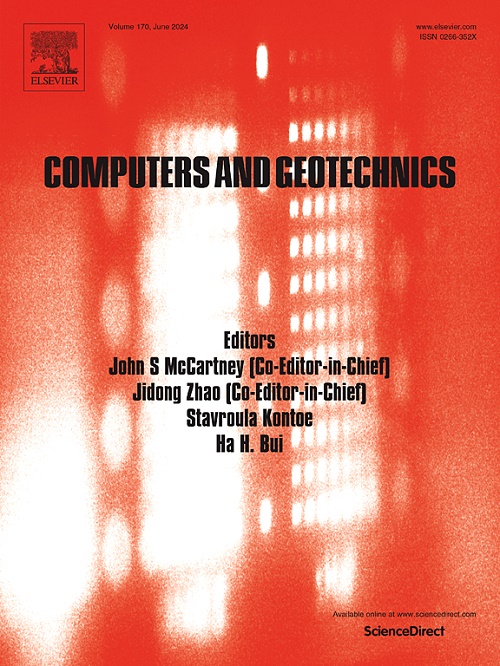岩土数据驱动的可能性可靠性评估
IF 6.2
1区 工程技术
Q1 COMPUTER SCIENCE, INTERDISCIPLINARY APPLICATIONS
引用次数: 0
摘要
管理稀缺、不完整或损坏的数据是岩土工程中一个持续的挑战,往往导致保守的设计。然而,正在进行的数字化使人们能够访问包含定性和定量信息的大型国家级间接岩土工程数据数据库,这些数据库可以用于支持选择、现场表征和设计。基于新提出的可能性数据驱动可靠性概念,本技术说明概述了一种实用、快速、可访问的实施过程,不需要专门知识。为基于可靠性的岩土工程问题评估和设计提供了逐步指导,确保与标准规范安全规定的一致性。该过程演示了如何利用由第三方管理员(如英国地质调查局)管理的大型间接数据库生成的可能性分布,为岩土能力或限制状态域的确定性评估导出设计输入值。通过三层“理解程度”框架严格结合工程判断,还提供了双层土中轴向荷载桩的工作示例,使用锥贯入试验数据进行表征。本文章由计算机程序翻译,如有差异,请以英文原文为准。
Geotechnical data-driven possibility reliability assessment
Managing scarce, incomplete, or corrupted data is a persistent challenge in geotechnical engineering, often leading to conservative designs. However, the ongoing digitalization has enabled access to large, national-scale databases of indirect geotechnical data containing both qualitative and quantitative information, which can be exploited to support optioneering, site characterization, and design.
Based on a newly proposed concept of possibilistic data-driven reliability, this Technical Note outlines a practical, fast, and accessible implementation procedure that does not require specialized expertise. Step-by-step guidance is provided for reliability-based assessment and design of geotechnical problems, ensuring consistency with standard code safety prescriptions.
The procedure demonstrates how to utilize possibility distributions generated from Big Indirect Databases managed by third-party administrators, such as the British Geological Survey, to derive design input values for deterministic evaluations of geotechnical capacity or limit state domains. Engineering judgement is rigorously incorporated through a three-tier ‘degree of understanding’ framework worked example of an axially-loaded pile in bilayer soil, characterized using cone penetration test data, is also provided.
求助全文
通过发布文献求助,成功后即可免费获取论文全文。
去求助
来源期刊

Computers and Geotechnics
地学-地球科学综合
CiteScore
9.10
自引率
15.10%
发文量
438
审稿时长
45 days
期刊介绍:
The use of computers is firmly established in geotechnical engineering and continues to grow rapidly in both engineering practice and academe. The development of advanced numerical techniques and constitutive modeling, in conjunction with rapid developments in computer hardware, enables problems to be tackled that were unthinkable even a few years ago. Computers and Geotechnics provides an up-to-date reference for engineers and researchers engaged in computer aided analysis and research in geotechnical engineering. The journal is intended for an expeditious dissemination of advanced computer applications across a broad range of geotechnical topics. Contributions on advances in numerical algorithms, computer implementation of new constitutive models and probabilistic methods are especially encouraged.
 求助内容:
求助内容: 应助结果提醒方式:
应助结果提醒方式:


